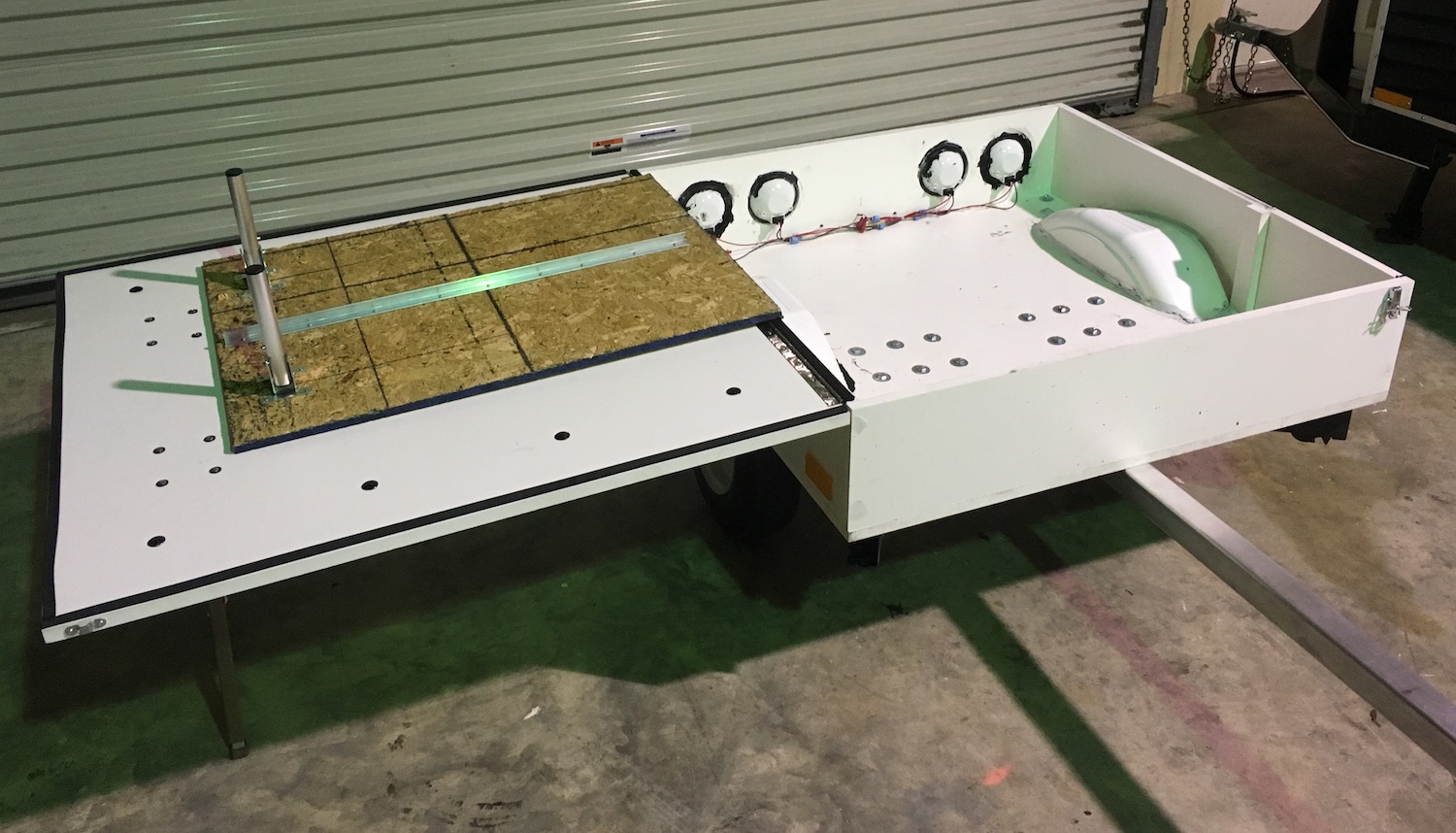0.4 Final analysis of Camper Prototype Zero

Maybe “camper prototype post mortem” is a better term.
When I got the box done, I needed a frame and a tent. The frame on this prototype was done with electrical conduit. I didn’t like the outcome and I went through a few yards of tubing trying to get good bends for the corners using a variety of methods. I settled on using conduit elbow joints to get the 90 degree angles I needed for the tent bows. Conduit doesn’t lend itself to telescoping but I fit some 1/2″ inside 3/4″ to get bows that would collapse and extend. The action was sloppy and the elbow joints still allowed the joins to move. I hated it but couldn’t do better at the moment.







The tent was the bigger issue. One visit to a marine upholstery shop left me in shock. A quote of $2K to cut and sew a tent, materials not included. That wasn’t going to work. I eventually found a local sailmaker on Craigslist willing to take on the job as a side gig. We settled on $600 plus the fabric which was still more than I wanted to pay, but not because I thought he was overcharging. I knew it would be a lot of work and for his time, that was fair. But I knew that if I wanted to do this again, I couldn’t shell out that kind of cash every time.
I left the camper with the sailmaker for a few weeks and soon had the finished product. It fit the camper very nicely. There were some quirks with what he did but I knew that was the result of not having very explicit instructions from me. Not his fault. I was happy with his work and it allowed me to build the finished prototype.
But that’s kind of where this one ended. This is the one prototype I never used as a camper. But I wasn’t disappointed. I’d learned so much I knew that with another try I could do better. So I gave this one a really honest assessment.
Design: The biggest deficiency in the design was the shallowness of the cargo box. I was really aiming for ultra low weight, but I went too low. I figured I really needed about a net of 13 to 14 inches of cargo headroom inside. Adding a few inches to store the lower bed half and the tent material put the minimum box height at around 18 inches.
Materials: I really, really liked the idea of building a camper with PVC sheet material. The material was very easy to cut and assemble. And it was a little lighter than equal quality marine grade plywood. But there were a few downsides to the material that ultimately ruled it out. First, it was too soft. Even using t-nuts to anchor the fasteners, I could see some pull-through on high stress joints. There was a very slight bow to the bottom of the cargo box, down the middle, revealing that the base would need support to hold the weight of the camper and contents and retain its shape.
Design, again: The only goals I met with this design were size and weight requirements. It was small and it was light. But it wasn’t practical. I needed to find a way to get some real telescoping tubes for a frame. Another drawback was the tent attachment method. I needed a better fastening strategy than to rely on velcro to hold the tent to the body of the camper when it was set up.
Skills and Capabilities: Despite the fact that I had not attempted this kind of build before, I was fairly well equipped to handle a good part of it. But there were clearly two areas that would be a problem for future builds. First, I did not have the skill or equipment to do my own sewing. This I felt was a big liability in the event that I should need to change the tent, or if I wanted to do something new and different in the future. Second, I didn’t have the ability to bend tubing, so unless I found a way around that I’d have to live with using a poor man’s solution (EMT conduit), have someone else handle it, or buy a tube bender.
I had a lot of time to consider all these things over the final months of 2017 as Hurricane Irma sent us packing for a couple of weeks. That was followed by a couple of months of clean up and, eventually, a move to higher ground. But that all set the stage for Prototype One, the first roadworthy, campworthy Kampereen.
Questions?
For more information about this camper you can contact me through this page.
My business is selling motorcycle campers and trailers and the gear you need to tow them with a motorcycle or trike. I run two sites: Open Road Outfitters and US Hitch.